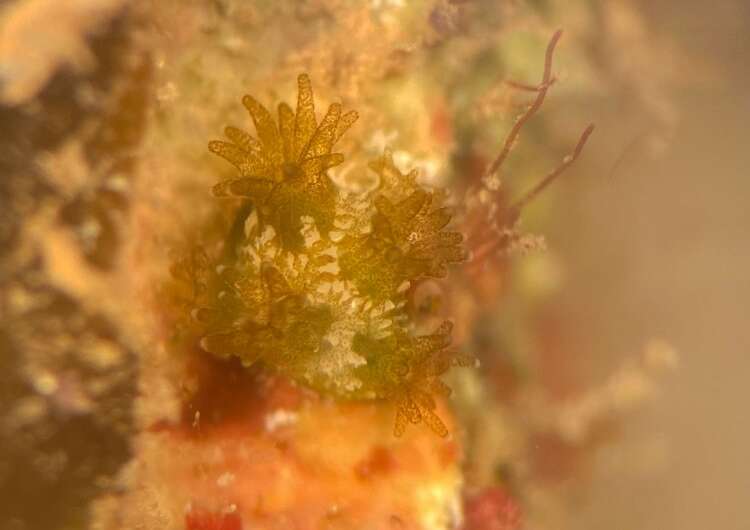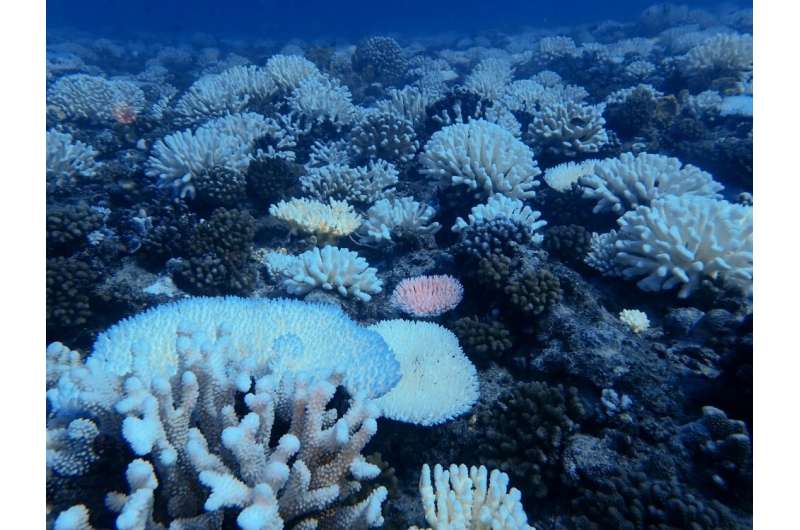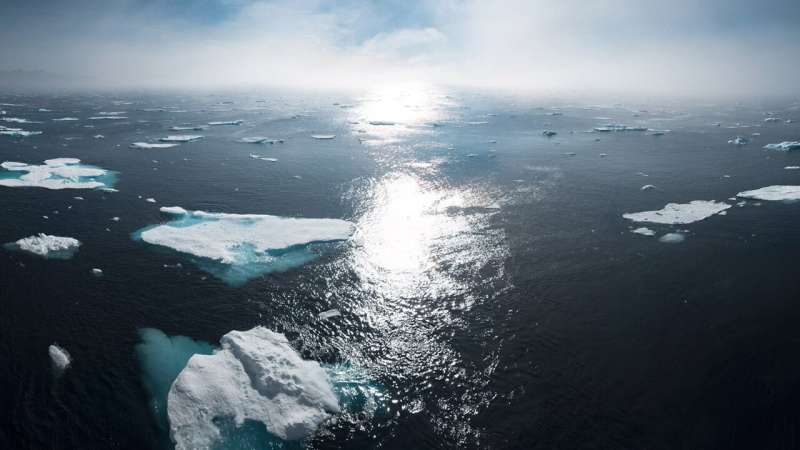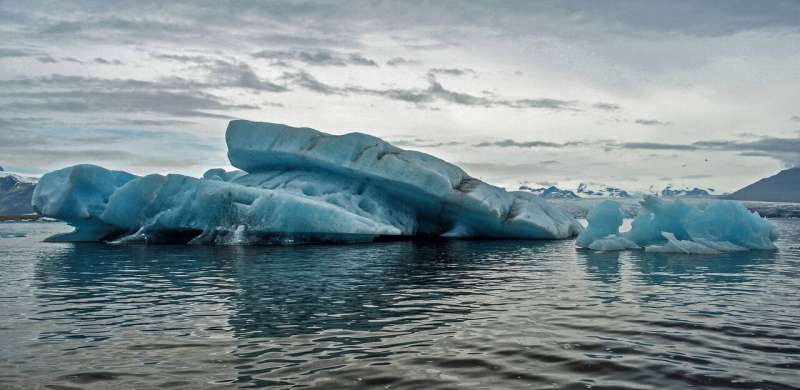Marine heatwaves can decimate the oldest and youngest coral, raising concerns about the reproductive future of reefs

Sometimes nature surprises you. That's what happened when a massive marine heatwave took hold in the waters around Moorea, French Polynesia, in late 2018. Fortunately, UC Santa Barbara researchers turned this event into an opportunity to investigate coral bleaching.
Scientists surveyed coral around the island during and after the heatwave, recording which colonies survived and which succumbed to the heat. They found that high ocean temperatures hit the largest coral hardest, an alarming result since the biggest colonies are most fertile. What's more, the heatwave also decimated baby corals. These trends, detailed in Global Change Biology, suggest that heatwaves could entirely restructure the size distribution of corals on reefs.
"We had this big marine heatwave event, and we found that it kills the corals that make the babies—the biggest corals—and it kills the corals that are the babies—the ones that have just settled on the reef," said senior author Deron Burkepile, a professor in UC Santa Barbara's Department of Ecology, Evolution and Marine Biology. These groups of corals are disproportionately responsible for reef recovery.
Most shallow-water corals are symbiotic animals. They host algae in their cells and receive energy from their partner's photosynthesis. However, this partnership can break down in a process called "bleaching" when the coral is under stress. The algae either leave or are expelled, revealing the coral's white skeleton. Although corals can recover from bleaching, the colony often will die if the stress continues.
The heatwave that began in December 2018, during the southern summer, and persisted through May 2019, "was one of the most intense marine heatwaves at our sites over the past 30 years," the authors wrote.

The researchers decided to investigate how the corals responded to this event. Divers surveyed two genera of coral at six sites, two on each of the island's three sides. The researchers categorized over 2,200 colonies into three size classes based on diameter and recorded their health.
"The results showed that for both genera, larger corals were significantly more likely to be bleached or dead than smaller corals," said lead author Kelly Speare, a doctoral candidate at UCSB. The event killed up to 76% and 65% of the largest colonies of the island's dominant coral genera, Pocillopora and Acropora.
Scientists had identified this pattern in previous bleaching events, but no one had documented it at large scale before. That said, the team wasn't expecting what they found. "We just wanted to go see what was happening," Burkepile said. "So we took data at all these different sites around the island, and this pattern fell into our laps. It really was a surprise."
The team also used coral settlement tiles to study the survival of that year's coral recruits. Speare painstakingly surveyed nearly 65 tiles in March 2019 and again in July, spending dozens of hours staring through a microscope. With these data, the team discovered the heatwave also wiped out nearly all of the baby coral. A whopping 98% of recruits died following the heatwave, compared to only 67% during the same time two years prior. "So the coral population got truncated at both ends of the size spectrum," Burkepile said.
Despite the strength of the findings, it's still an open question as to what mechanisms are driving these trends. Perhaps there are physiological differences that make large colonies more susceptible to bleaching. For example, corals exchange gases and bio-molecules with the surrounding seawater, and smaller colonies may do this more efficiently than larger ones due to their geometry. "When corals get stressed by temperature, and their algal symbionts are making free radicals and toxins, larger corals may have a harder time of getting rid of these," Burkepile said. "So they may be more likely to kick out their symbionts and bleach."

These genera of coral also contain many species that look alike that are indistinguishable to the naked eye. So it's possible that the large corals the team saw belonged to more sensitive species than the smaller corals currently present on the reef. Other researchers working at Moorea are investigating this.
Different corals also have different algal symbionts, and it's also possible that coral's microbiology may change as they grow. "All these mechanisms are not mutually exclusive," Burkepile added, "so many may be operating at once."
That said, Speare believes that different mechanisms underly the vulnerability of baby corals. "We know that the early life stage is really sensitive to all kinds of stresses," she said. These recruits are just establishing themselves and generally consist of only a few polyps. "One idea is that if small corals experience bleaching early on, then they may struggle to regain their symbiotic partners as they get older."
This is the first study to track the survival of these coral recruits on the reef. "It's especially tough to study the baby corals because they're difficult to see, and they're really difficult to follow," Burkepile said. Previous studies on baby corals have all been small-scale lab experiments.
The combined effect of losing the largest and smallest corals could be devastating to the reef. Because corals are colonies of hundreds or thousands of individual animals, larger ones have greater reproductive capacity, or fecundity. "So if we shift to a community of corals that's much smaller, that community is going to produce far fewer baby corals," Speare explained.

The researchers used a mathematical model to estimate how the disappearance of large colonies might affect this. "We estimate that this bleaching event reduced overall fecundity on these reefs by >58% for both Pocillopora and Acropora," the authors wrote. And the staggering mortality of baby coral only compounded this effect. "Together, these results suggest that bleaching events may compromise recovery capacity of coral reefs by disproportionately impacting the life stages most critical: Coral recruits and the largest, most fecund corals."
Understanding these patterns will help scientists model and forecast the impacts of marine heatwaves in the future. This, in turn, will teach them about how connectivity among reefs—the transport of coral larvae between locations—influences recovery after disturbances. This could help researchers pinpoint which reefs may be more resilient to climate change and which may deserve increased protection.
There's still much to learn about this phenomenon. The team isn't sure whether larger colonies were more likely to bleach, or simply more likely to succumb once they had bleached. Teasing apart this nuance will require more data timepoints from another large bleaching event.
"We're also trying to understand whether or not local factors—like fishing pressure and nutrient pollution—influence how well communities do during and after bleaching," Speare said, "as well as the recruitment of new individuals in subsequent years." Previous findings from the Burkepile lab suggest that managing local conditions could help coral reefs persevere in the face of climate crisis.
"These findings really reinforced to me the urgency of mitigating the climate crisis," Burkepile said. "It was a surprise to us how the bleaching event so dramatically impacted these differently sized corals.
"Certainly, climate change has more surprises in store for us," he continued, "and the more of them we can avoid, the better off we will be."Coral bleaching impacts 98% of Great Barrier Reef: study
More information: Kelly E. Speare et al, Size‐dependent mortality of corals during marine heatwave erodes recovery capacity of a coral reef, Global Change Biology (2021). DOI: 10.1111/gcb.16000
Journal information: Global Change Biology
Provided by University of California - Santa Barbara








